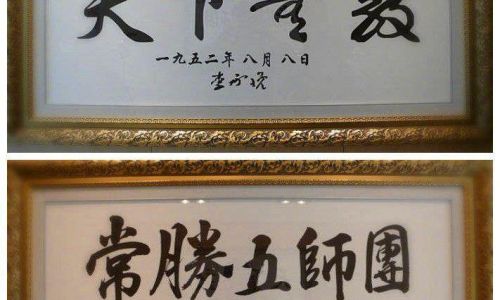The Concept of Revenge and Redemption: Understanding “Revenge and Clearing Humiliation” in Cultural and Philosophical Contexts*
The phrase “revenge and clearing humiliation”—a direct translation of the Chinese idiom bào chóu xuě chǐ—encapsulates a profound human emotion and moral imperative. Rooted in the complexities of honor, justice, and identity, this concept reflects a universal struggle to rectify wrongs, restore dignity, and rebalance the scales of perceived injustice. To dissect its meaning is to embark on a journey through history, literature, philosophy, and the human psyche, exploring how cultures across time and space have grappled with the primal urge to retaliate against harm and erase the stain of disgrace.
At its core, bào chóu xuě chǐ combines two intertwined yet distinct notions: revengebào chóu) and clearing humiliationxuě chǐ*). Revenge, often driven by anger or a sense of moral duty, seeks to inflict harm on a perpetrator in response to a perceived injury. It is a visceral reaction to betrayal, loss, or oppression, a way to assert control when justice seems unattainable through conventional means. Clearing humiliation, by contrast, is less about punishing the aggressor and more about restoring one’s honor or dignity. It is an act of self-reclamation, a declaration that the victim will not be defined by the wrongdoing inflicted upon them.
Together, these concepts form a dual mandate: to hold wrongdoers accountable and to reclaim one’s standing in the eyes of oneself and society. This duality raises profound questions: Is revenge ever justified? Can humiliation truly be “cleared,” or does the act of seeking vengeance merely perpetuate a cycle of harm? How do cultural norms shape the way individuals and societies navigate these tensions?
Historical and Cultural Roots
The pursuit of revenge and the erasure of humiliation have deep historical roots, particularly in societies where collective memory and ancestral honor held sacred significance. In feudal China, for example, the concept of xiào (filial piety) and zhōng (loyalty) often intersected with the duty to avenge familial or national disgrace. The Spring and Autumn Annals, a historical record of ancient China, chronicles numerous tales of individuals who sacrificed their lives to restore their clan’s honor, framing revenge as a moral obligation rather than a selfish act.
Similarly, in medieval Europe, the lex talionis (“law of retaliation”) embedded in the Code of Hammurabi—“an eye for an eye”—legitimized revenge as a tool for maintaining social order. However, the rise of organized legal systems gradually shifted the responsibility for meting out justice from individuals to the state, a transition that sparked debates about the morality of private vengeance.

Philosophical Debates: Justice vs. Retribution
Philosophers have long wrestled with the ethics of revenge. Confucian thought, while emphasizing harmony and forgiveness, also acknowledged the necessity of addressing grievances to prevent societal breakdown. Mencius, a key Confucian scholar, argued that righteous anger (yì nù) was a virtue when directed at injustice, provided it remained proportionate and purposeful. In contrast, Daoist philosophers like Laozi advocated for letting go of resentment, believing that revenge only deepened the cycle of violence.
In the Western tradition, thinkers such as Friedrich Nietzsche and Søren Kierkegaard offered contrasting perspectives. Nietzsche, in On the Genealogy of Morals, criticized Christian morality for stifling the “will to power” inherent in revenge, arguing that societies that suppress such urges breed resentment. Kierkegaard, meanwhile, framed revenge as a form of existential despair, a refusal to accept life’s inherent suffering.
Modern legal systems, rooted in Enlightenment ideals, generally reject private revenge, framing it as an anachronism in a world where impartial courts and due process should govern justice. Yet the persistence of vigilante narratives in literature and film—from The Count of Monte Cristo to Kill Bill—suggests that the primal allure of revenge endures.
Literary and Artistic Expressions
The theme of revenge and humiliation has fueled some of humanity’s most enduring stories. In Chinese literature, The Water Margin (Shuihu Zhuan) portrays outlaws who rebel against corrupt officials, framing their violence as a means to redress systemic injustice. Similarly, The Romance of the Three Kingdoms (Sanguo Yanyi) features characters like Guan Yu, whose unwavering loyalty and thirst for vengeance against those who wronged his brother Liu Bei become legendary.
Western literature offers parallel examples. Shakespeare’s Hamlet explores the psychological toll of seeking revenge, as the protagonist’s indecision leads to self-destruction. In contrast, the Greek tragedy Medea by Euripides depicts a woman so consumed by humiliation that she murders her own children to punish her unfaithful husband, a act that blurs the line between justice and barbarity.
These narratives often grapple with the moral ambiguity of revenge. While audiences may sympathize with the avenger’s pain, they are also confronted with the inevitability of collateral damage. The “cleansing” of humiliation, these stories suggest, is rarely without cost.
The Psychology of Revenge
Modern psychology provides insight into why the desire for revenge is so deeply ingrained. Studies in neuroscience suggest that acts of retaliation activate the brain’s reward system, releasing dopamine and providing a sense of closure. The “humiliation” component, meanwhile, ties into the human need for social validation; being wronged can shatter one’s self-esteem and status, making the act of “clearing” it essential to psychological recovery.
However, the pursuit of revenge can also become addictive. The “Bader-Meinhof phenomenon,” where obsession with an injury amplifies perceived slights, can lead individuals to interpret neutral events as fresh attacks, perpetuating a cycle of aggression. This paradox—revenge as both healing balm and poison—underscores the complexity of human emotion.

Modern Dilemmas: Justice, Forgiveness, and Reconciliation
In the 21st century, the tension between revenge and redemption plays out in global debates about criminal justice, restorative justice, and social movements like #MeToo. While legal systems prioritize punishment and deterrence, advocates of restorative justice argue that healing requires addressing the harm done to victims and communities, not just punishing offenders.
The South African Truth and Reconciliation Commission, for example, offered amnesty to perpetrators of apartheid-era crimes in exchange for truthful testimony, prioritizing collective healing over retribution. Similarly, movements for Indigenous rights often frame land reparations and cultural revival as forms of “clearing humiliation” without resorting to violence.
Yet these approaches are not without controversy. Critics argue that forgiveness can feel like a second injury, implying that victims should simply “move on” without justice. The balance between accountability and mercy remains a delicate, often fraught, negotiation.
Revenge in the Digital Age
The rise of social media has introduced new dimensions to the dynamics of revenge and humiliation. “Cancel culture”—the public shaming of individuals for perceived wrongs—can be seen as a modern form of xuě chǐ, where collective outrage seeks to erase an individual’s social standing. However, the anonymity and speed of digital platforms can escalate minor grievances into viral witch hunts, blurring the line between justice and mob mentality.
Conversely, cyberbullying and doxxing (publishing private information to incite harassment) represent a darker side of digital revenge, where humiliation is weaponized with little regard for consequences. These phenomena raise urgent questions about the ethics of vigilantism in an interconnected world.
Conclusion: The Enduring Legacy of Revenge and Redemption
The concept of “revenge and clearing humiliation” remains a mirror to the human condition, reflecting our timeless struggle to reconcile primal instincts with civilized ideals. While societies increasingly rely on legal and moral frameworks to manage conflict, the allure of taking justice into one’s own hands persists. The challenge lies in channeling the energy of revenge toward constructive ends—whether through legal reform, restorative practices, or personal growth.
Ultimately, bào chóu xuě chǐ is not merely about retaliation or erasure, but about reclaiming agency in the face of adversity. It is a testament to the human capacity for resilience, a reminder that even in darkness, the desire to rise above humiliation can fuel profound transformation. As long as injustice exists, the urge to avenge and redeem will endure—a paradoxical force that can either destroy or inspire, depending on how it is wielded.






0 comments